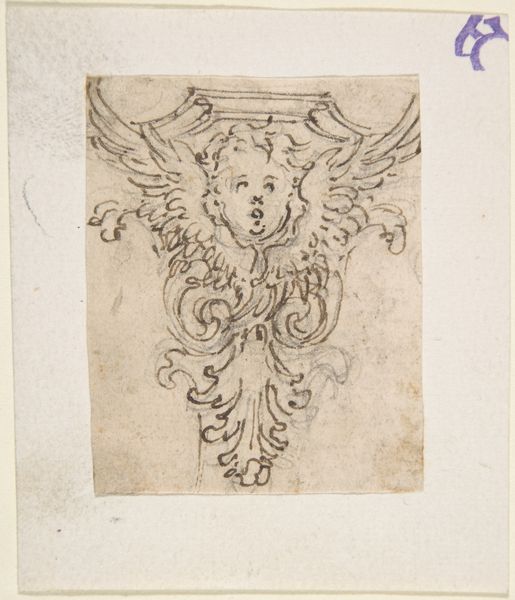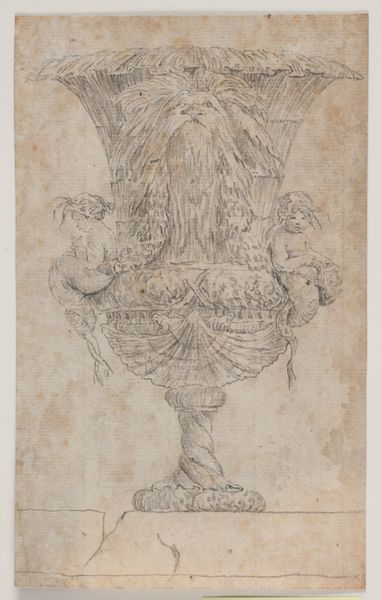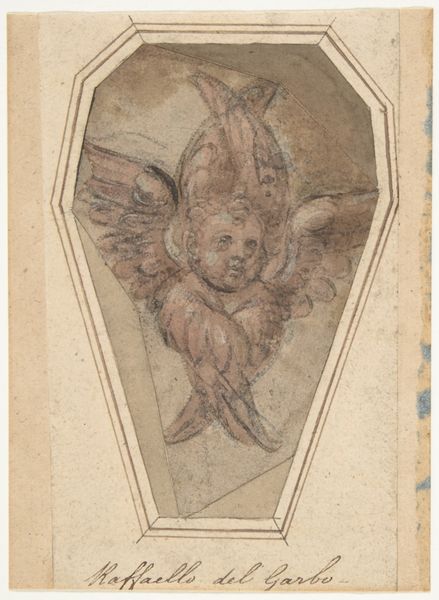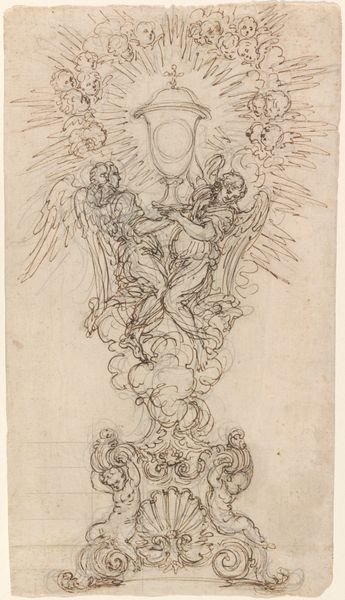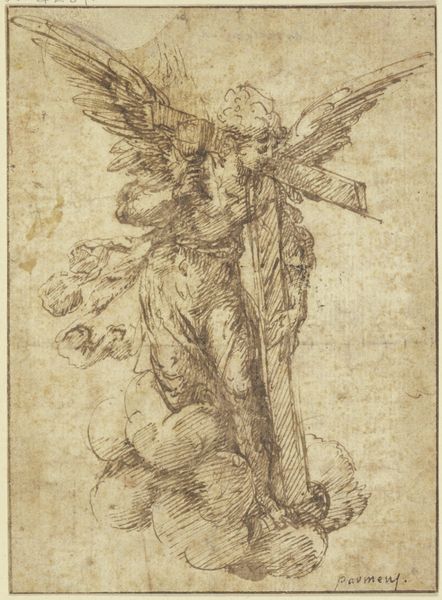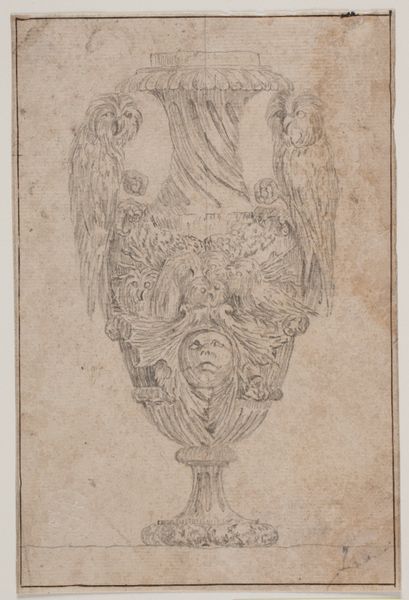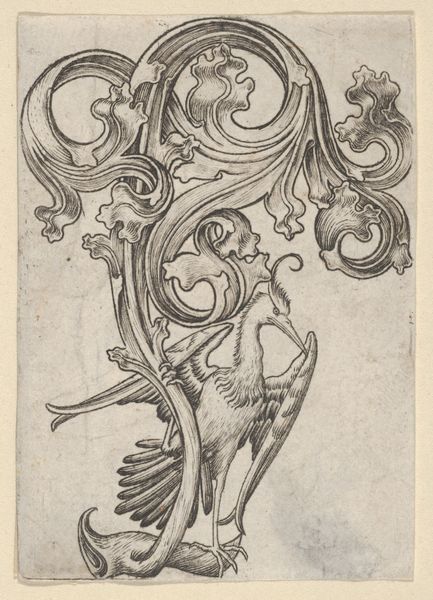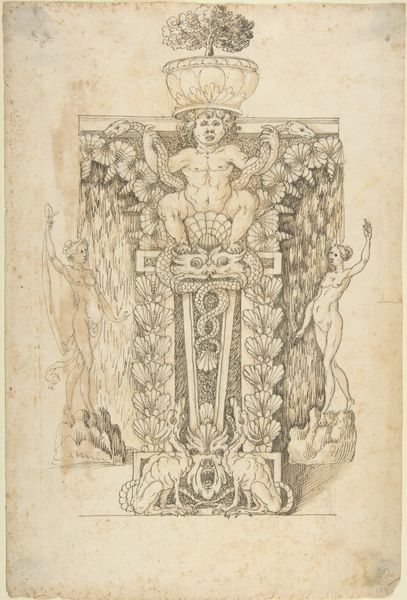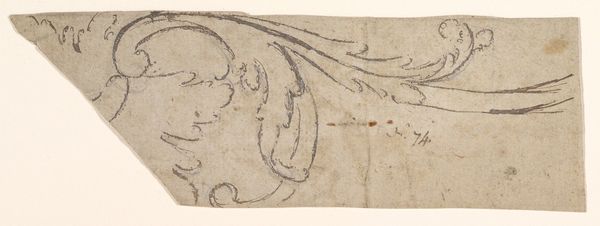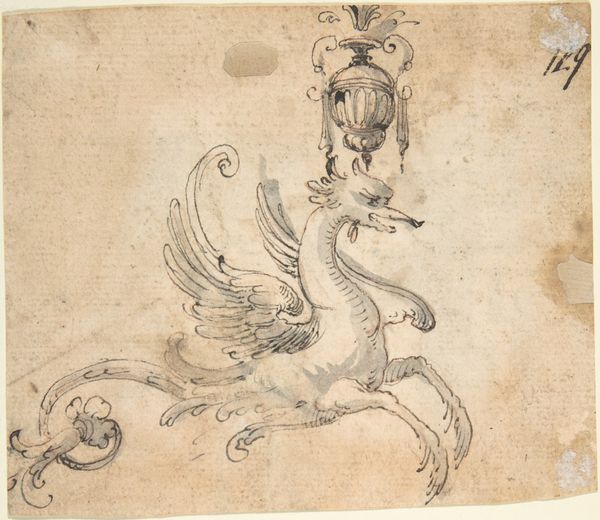
Squatting Monster with Human Head and Wings n.d.
0:00
0:00
drawing, print, paper, ink, ink-drawings, pen
#
drawing
#
toned paper
#
water colours
#
germany
# print
#
pencil sketch
#
charcoal drawing
#
possibly oil pastel
#
paper
#
ink
#
coffee painting
#
underpainting
#
ink-drawings
#
water
#
pen
#
watercolour bleed
#
watercolour illustration
#
watercolor
Dimensions: 258 × 173 mm
Copyright: Public Domain
Curator: Standing before us is a captivating drawing attributed to Virgilius Solis the Elder. It's called "Squatting Monster with Human Head and Wings," its date is unknown. The piece, rendered in ink on paper, resides here at The Art Institute of Chicago. Editor: Wow, unsettling is my first thought. The figure’s direct stare and peculiar features, along with that strange combination of human, animal, and avian traits is quite off-putting. It dominates the space with an unexpected intensity despite the modest size and subdued color palette. Curator: The grotesque figure indeed exudes a powerful presence. It likely originates within a tradition of representing mythical creatures. Images such as these had various functions from simple entertainment to serving as emblems or allegorical figures used to comment on political or moral concerns. It would be part of wider culture that gave life to such figures. Editor: The drawing seems like it might also allude to marginalized communities. Historically, monstrous depictions were often used to dehumanize and oppress specific populations by highlighting certain characteristics. Perhaps its unsettling nature served to stigmatize and control those considered "other." It speaks volumes about how fear is manipulated. Curator: That is a very interesting reading. During the period in which Solis was active, the function of printing underwent huge transformations. Dissemination of cheap printed images brought new and affordable propaganda that further entrenched power into centralized institutions. This could then have worked its way into art being produced in Solis' studio. Editor: The very details feel pointed – note how the squatting posture hints at constraint and submissiveness? How its sharp talons might stand for the clutching, uncompromising reach of power? Even its crown looks forced or painful! This resonates strongly when looking at art history through a lens that prioritizes voices frequently repressed. Curator: Indeed. Images had social lives too! And how this imagery was received and reproduced says a lot about how entrenched these perspectives were at a particular historical moment. I find myself considering too, what kinds of individual interpretations these illustrations would have carried from user to user, based on the printed forms that sprung up after his death. Editor: Ultimately, even with our divergent approaches, there's an undeniable narrative power in the "Squatting Monster". Whether understood through art production systems or contemporary interpretation models, it presents us all with compelling possibilities for challenging established social canons. Curator: A fantastic point to end on; thank you for lending such diverse angles onto what would otherwise be only a set of old ink markings.
Comments
No comments
Be the first to comment and join the conversation on the ultimate creative platform.
